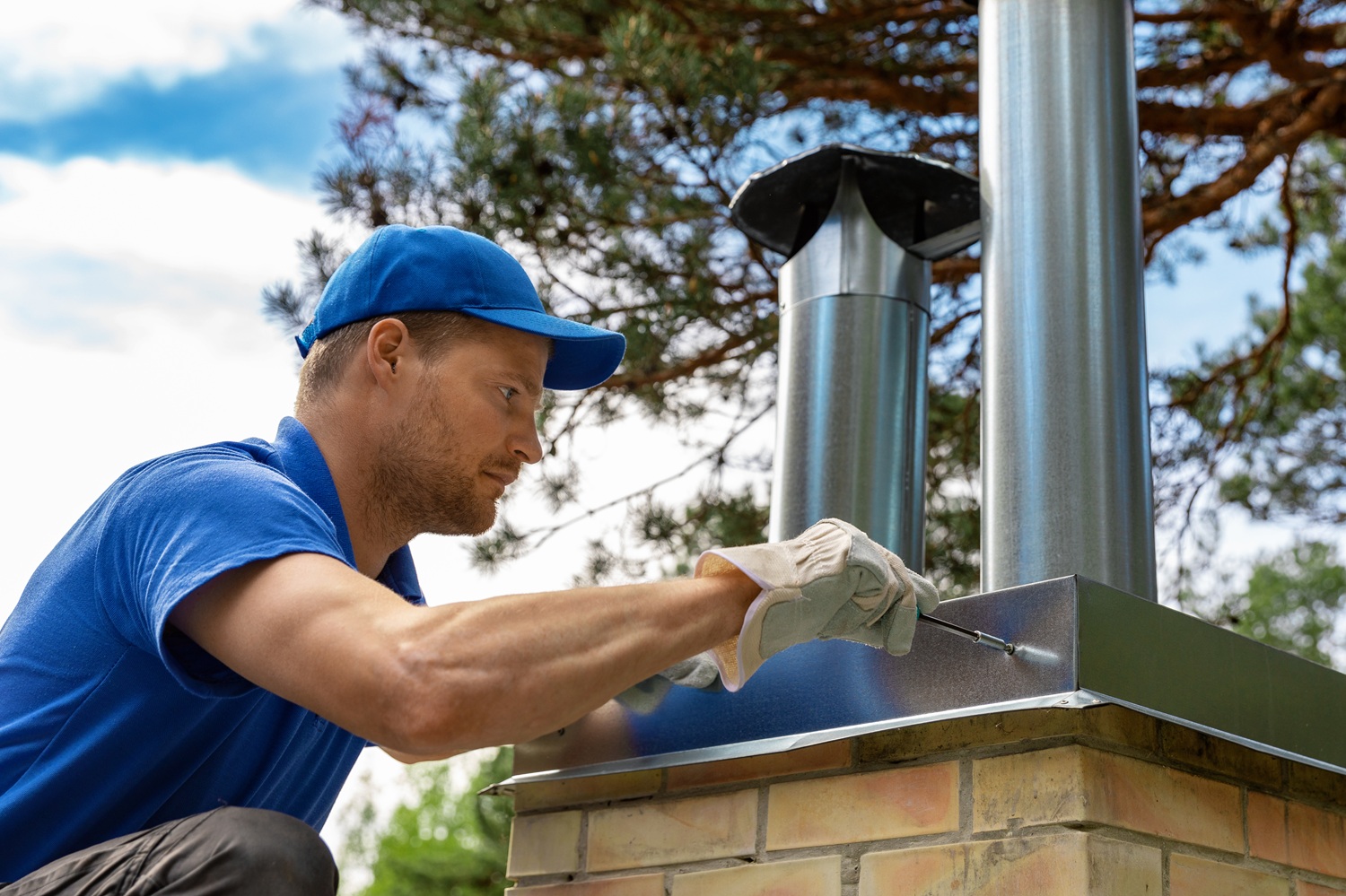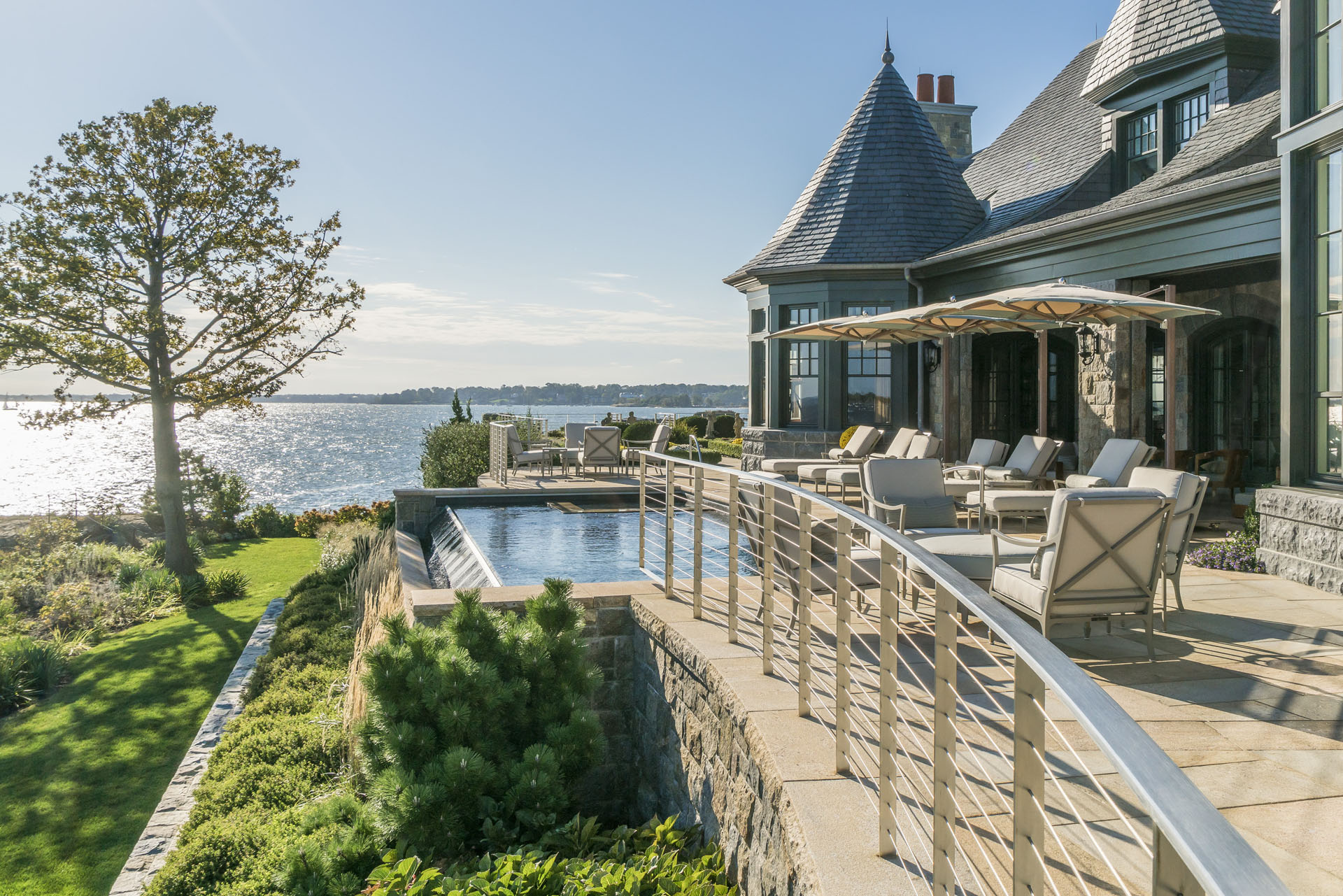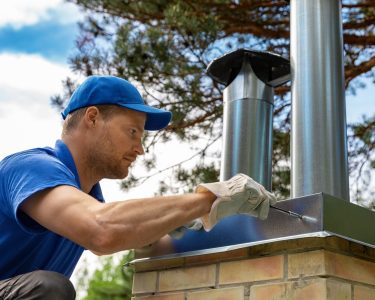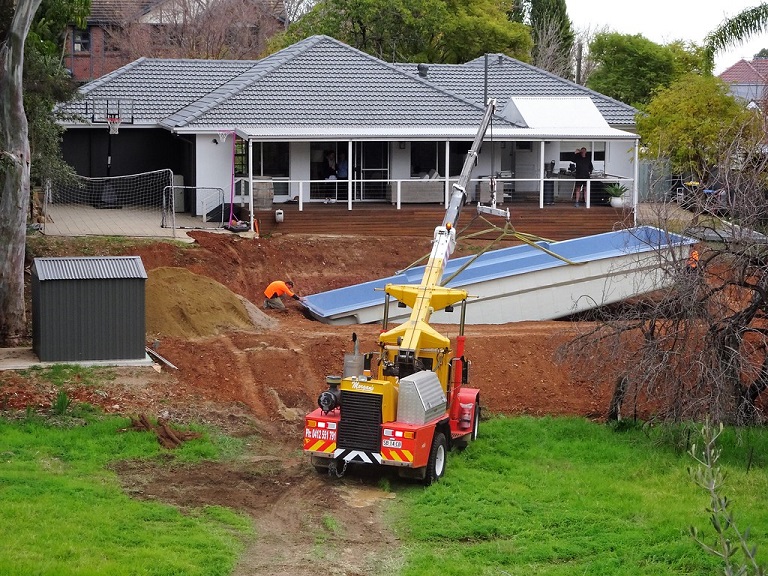The pitter-patter of a leaky chimney is quite the concentrated problem for your SoCal home. Going without roof chimney leak repair poses huge risks to your home’s structure, interior, and air quality.
In Southern California, climate extremes, wildfires, and shifting ground make addressing roof chimney leaks urgent and complex. These regional quirks make your roof that much more vulnerable.
For example, SoCal’s dry heat causes sealants and flashing to crack or warp. Heavy winter rains scour your roof-to-chimney connection for the tiniest gaps. Seismic events and movement loosen flashing or masonry without visible damage.
The longer you wait, the higher your risk becomes. Interior leaks, fire hazards, and structural failure all become more likely over time.
This guide covers everything you need to know about roof chimney leak repair in SoCal. Whether you’re a homeowner learning warning signs or a property manager deciding when to call a roofer, we’ll walk you through the process.
What Is Roof Chimney Leak Repair?
Roof chimney leak repair involves finding and fixing water entry points where the chimney meets the roof. These repairs prevent moisture damage to your home. They work by sealing or replacing damaged materials like flashing, mortar, and roofing shingles around the chimney base.
Why Does the Chimney Leak in the First Place?
Several factors contribute to chimney leaks:
- Vulnerable roof intersection: Chimneys create natural weak spots in the roofline where water can enter.
- Flashing failure: Metal flashing rusts, lifts, or cracks over time. This allows rain to seep through gaps.
- Masonry damage: Cracked bricks, missing mortar, or deteriorating crowns absorb water. They can also direct it into your home.
- Missing chimney cap: Without a cap, rain enters the flue or pools at the base. Eventually, this causes leaks.
- Improper roof slope: Poor roof design sometimes sends runoff directly toward the chimney base.
Is It the Same as a Regular Roof Leak?
Chimney leaks differ from typical roof leaks. While they involve similar roofing materials, chimney leaks need specialized attention to both roof and chimney structure.
Depending on the issue, you may need both a roofer and a chimney technician.
What Happens If I Don’t Fix It?
Unrepaired chimney leaks create serious problems:
- Mold and mildew growth
- Damaged ceilings, drywall, or insulation
- Rusted fireplace components
- Structural wood rot
- Higher long-term repair costs
Common Signs of a Chimney Leak
Roof chimney leaks start small and get worse over time. Finding them early negates the need for major water damage repairs later.
Watch for these common indicators:
- Stains on ceilings or walls near the fireplace: Yellow or brown water spots often appear first.
- Musty odors or mold: Persistent dampness around the chimney leads to mildew. This especially happens in attics or wall cavities.
- Dripping sounds during or after rainstorms: These sounds signal water moving down the flue or pooling inside roof cavities.
- Rust inside the firebox or on the damper: Rusted components mean water has found its way inside.
- Cracked or missing flashing around the chimney: Flashing protects where the chimney meets the roof. Damage here signals major trouble.
- Loose or crumbling bricks: Water damage forces bricks to expand, crack, and shed pieces.
Many of these warning signs overlap with general roof or structural concerns. Read more about the signs it’s time to call exterior remodeling contractors before small issues spiral into costly repairs.
If you wonder why water appears around your chimney after rain, these symptoms likely point to specific problems. Flashing failure, crown cracks, or deteriorated mortar are common culprits.
Even minor leaks can spread rapidly without attention.
How Roof Chimney Leaks Are Diagnosed
Before fixing a chimney leak, you need to find exactly where and how water enters. Since leaks can originate from many sources, check every nook and cranny.
These sources include roofing, flashing, masonry, or the chimney cap.
Visual Inspection
Professional roofers or chimney technicians start with close-up inspections. They examine flashing, rooflines, mortar joints, chimney crowns, and nearby shingles or tiles.
They look for gaps, rust, cracks, or material deterioration invisible from ground level.
Learn more about these chimney inspections via debunking some common myths and misconceptions around them.
Infrared and Moisture Detection
Many Southern California contractors use thermal imaging or moisture meters. These tools detect water intrusion inside walls, ceilings, or attic spaces before visible staining or mold appears.
Hose Testing
When leak sources remain unclear, technicians may perform controlled hose tests. They spray water on specific roof sections or chimney components one at a time to track water entry points.
Drone Inspections
For homes with steep, delicate, or solar-paneled roofs, drone inspections provide safe, detailed views. They capture roof and chimney conditions from above without safety risks.
New tools like thermal cameras and drone inspections reflect how construction technology is changing modern home building, especially when diagnosing hidden leaks.
Smoke or Dye Testing
Rarely, professionals use smoke or harmless dye to trace leak paths. This method works through chimney flues or roofing seams in complex or high-end roofing systems where standard methods fail.
When Should You Get an Inspection?
Schedule inspections in these situations:
- After strong storms or earthquakes
- When you see new ceiling or wall stains
- If your chimney is over 15 years old and unchecked
- When previous repairs haven’t stopped the leak
Early detection is what tips the scales between minor flashing fixes and thousands in structural repairs. If you’re unsure about leak sources, a licensed SoCal roofer with chimney experience can provide clear diagnosis.
Chimney leaks are often flagged during inspections. Learn more about other common home inspection problems that could affect your roof and overall property value.
Step-by-Step: How Chimney Leaks Are Repaired
Fixing roof chimney leaks requires customized approaches. There could be many potential sources, like flashing, masonry, roof slope, or the chimney cap. Furthermore, they can have idiosyncratic effects on your chimney.
In Southern California, repairs must also account for heat, UV exposure, and seismic movement.
Here’s how professionals usually repair chimney leaks in SoCal homes:
1. Identify the Exact Source of the Leak
Before using any tools, professionals perform detailed inspections. They determine if issues stem from damaged flashing, cracked mortar, missing caps, deteriorated roofing, or combinations of these problems.
2. Remove Damaged Materials
Roofers strip out old or faulty flashing, deteriorated sealant, and compromised shingles or tiles around the chimney base. If crowns or bricks are crumbling, they clean and prep those areas too.
3. Install New Step and Counter Flashing
High-quality metal flashing gets layered along the chimney base. Step flashing works with overlapping counter flashing to protect against water intrusion.
In wildfire-prone areas, contractors often use Class A fire-rated materials.
4. Seal All Joints and Gaps
Waterproof caulk, roofing cement, or elastomeric sealants get applied at key junctions. These include areas between flashing and brick, under shingles, and around the chimney crown.
This creates watertight barriers that withstand wind and heat stress.
5. Replace Damaged Roofing Materials
Any shingles, tiles, or underlayment showing water damage gets replaced. This restores full roof integrity around the chimney area.
6. Install or Repair the Chimney Cap
Missing or rusted caps let water and debris flow directly into the flue. Technicians ensure chimneys get properly fitted, corrosion-resistant caps to keep rain out.
7. Add a Chimney Cricket (if needed)
Chimneys 30 inches wide or larger can collect water on the uphill side. In these cases, contractors build small ridges called “crickets” behind chimneys.
These structures divert runoff to either side, which is especially helpful during SoCal winter rains.
8. Perform a Final Water Test
Once repairs finish, technicians may perform water tests to make sure the leak is fixed. This step is essential before job completion, especially when interior damage occurred.
Chimney leak repair in SoCal involves more than sealing cracks. It’s about restoring waterproof protection at vulnerable roof points.
Complete repairs often include flashing replacement, masonry sealing, cap installation, and drainage improvements like crickets.
DIY vs. Hiring a Professional
When you spot chimney leak signs, you might wonder about fixing it yourself. While confident homeowners can handle some tasks, most chimney leaks need professional tools, training, and expertise.
Doubly so in Southern California, where fire safety and weather conditions magnify repair complexity,
What You Can Do Yourself
- Visual inspections: From ground level or attics, check for water stains, rust, or daylight around chimneys.
- Clear debris: Remove leaves or branches near chimney bases and clean gutters to reduce water pooling.
- Seal small gaps: For minor cracks, roofing caulk or flashing tape may offer short-term solutions. But, this only works on safe, accessible roofs.
Can you seal chimney leaks yourself? Yes, but only for small, surface-level issues.
When to Hire a Professional
Hiring a trusted roofing contractor ensures the work is done properly and protects your home from future damage.
Certain situations need professional help:
- Flashing replacement: This often requires lifting shingles, cutting metal, and creating layered seals that integrate with roofing systems.
- Masonry damage: Repointing mortar or patching cracked chimney crowns is labor-intensive. It also requires proper materials.
- Recurring leaks: Repeated leaks after DIY repairs usually signal deeper issues. Hidden flashing failures or structural weaknesses often cause these problems.
- Steep, tall, or tiled roofs: Many Southern California homes have clay tile or Spanish-style roofs. These are difficult and dangerous to navigate without training.
- Local permit requirements: Some SoCal cities must chimney and roof repairs to follow specific fire safety and building codes.
Basic inspections and preventative maintenance can be safe and cost-effective DIY projects. But, for active leaks, flashing replacement, or roof access work, hiring licensed roofers ensures proper completion.
Professional work also keeps your home protected.
How to Prevent Future Chimney Leaks
The best way to avoid costly roof repairs is nipping chimney leaks in the bud. Southern California’s unique climate creates specific challenges.
Long dry spells interrupted by intense storms mean your chimney needs preparation for sudden weather changes, heat stress, and seismic activity.
Here’s how to stay ahead of common leak triggers:
Schedule Annual Roof and Chimney Inspections
Professional inspections catch issues like cracked flashing, loose bricks, and worn sealants before they become major leaks. Schedule inspections before rainy season, usually early fall in SoCal.
Keep Gutters and Downspouts Clear
Clogged gutters cause water to pool around chimney bases. Clear leaves and debris regularly, especially after Santa Ana winds or wildfire events.
Maintain Flashing and Sealants
Have your roofer check metal flashing and waterproof caulks every few years. Southern California’s intense sunlight dries out sealants faster than in cooler climates.
Install a Chimney Cap
High-quality chimney caps keep out rain, debris, and animals. Make sure caps fit securely and resist rust, especially in coastal areas where salt air speeds corrosion.
Add or Maintain a Chimney Cricket
Wide chimneys should have crickets (small ridges built behind chimneys) to divert water runoff. Without them, water may pool and leak at the base during storms.
If you’re already investing in exterior upgrades, consider these outdoor kitchen ideas to enhance your outdoor living space while protecting your home from water intrusion.
Use Fire-Safe, Weather-Resistant Materials
Any repairs or upgrades should use Class A fire-rated materials that withstand heat and moisture. This is often required in wildfire-prone SoCal zones.
Waterproof the Masonry
Apply breathable masonry sealant every 2–3 years. This prevents moisture absorption in bricks or mortar, which leads to internal leaks and freeze-thaw damage at higher elevations.
Don’t Wait to Fix a Chimney Leak
Roof chimney leaks are a silent killer, staying hidden until they do serious damage. In Southern California, where weather patterns shift quickly and climate adds roof stress, early action protects your entire home.
Signs often start subtly: ceiling stains, musty smells, or missing flashing pieces. Yet, ignoring these symptoms leads to mold, rot, energy loss, and expensive repairs.
Whether dealing with cracked flashing, damaged masonry, or missing chimney caps, the key is acting early and addressing issues completely.
If you’ve noticed anything suspicious near your chimney, don’t wait for the next storm. Call a licensed professional to inspect, diagnose, and repair leaks before they worsen.





